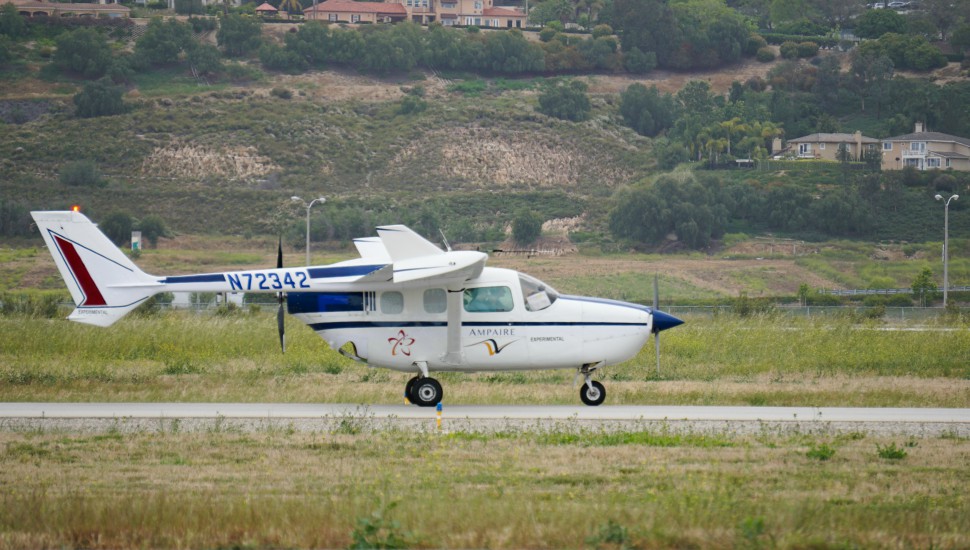A Cessna 337 Skymaster powered partly by an electric motor flew on 6 June from a California airport, demonstrating a prototype propulsion system that manufacturer Ampaire hopes to deploy commercially by 2021.
Ampaire replaced the twin-engined 337’s rear combustion engine with a “proprietary electric propulsion system” that utilises a lightweight battery system for power.
But the company left the 337’s forward engine in place, resulting in a “parallel hybrid” design in which the gas engine and electric motor run concurrently, each providing thrust.
Cessna 337s have a push-pull propulsion design, with one propeller at the front of the fuselage and one at the rear. The aircraft are typically powered by two Continental IO-360 piston engines.
The six-seat prototype took off from Camarillo airport northwest of Los Angeles with one pilot and one flight engineer aboard, and flew about 22nm (40km). Ampaire had already flown the prototype but says the 6 June sortie was the first flight before a public audience.
The FAA in May granted Ampaire authority to begin a flight-test programme, which will involve multiple missions each week until August, to “gather data about the electric propulsion’s performance characteristics”.
Califonia-based Ampaire has disclosed few details about the aircraft or its systems on the grounds that it is a prototype.
However, the firm says the modified 337’s range is “nominally” 174nm, although this will vary according to passenger count and weather conditions.
Ampaire will use flight-test data to develop a pre-production prototype, which it expects to ship to the Hawaiian island of Maui, Hawaii later this year for flight testing between Kahului and Hana.
Hawaiian regional carrier Mokulele Airlines will support the effort by providing Ampaire with hangar space, parts, pilots and maintenance, according to reports.
Ampaire is also working to establish a test programme with Puerto Rican regional carrier Vieques Air Link, and 14 airlines have expressed interest in the technology, it says.

Ampaire replaced this Cessna 337’s rear combustion engine with an electric propulsion system, leaving the forward engine in place
Ampaire
“Ampaire has mapped a clear path… to commercial operations in 2021,” the company says.
The effort comes amid a boom of interest in hybrid-electric and electric aircraft designs, which are seemingly coming closer to commercial viability.
Israel’s Eviation is developing Alice, a nine-passenger commuter and business electric aircraft. Likewise, Canadian regional airline Harbour Air expects to begin flights with a modified de Havilland DHC-2 Beaver seaplane later this year, using an electric propulsion system made by Magnix. That company is also providing power for Alice.
Meanwhile, United Technologies has started work on “Project 804”, an effort with Pratt & Whitney Canada to develop a hybrid-electric propulsion system for a regional airliner using a De Havilland Aircraft of Canada Dash 8-100 turboprop as a prototype.
Source: FlightGlobal.com






















